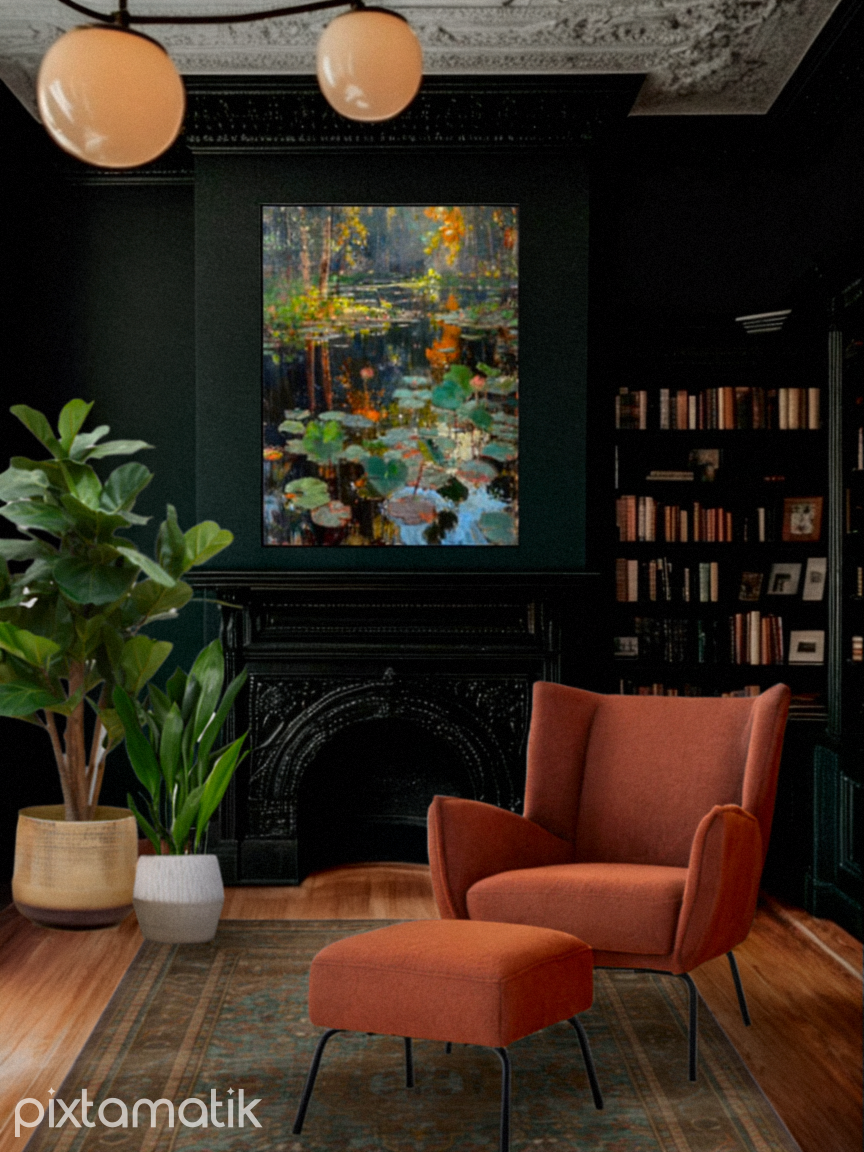02. Pixtamatik
Home design should be inspiring, not intimidating. Pixtamatik helps you visualise your space, turning uncertainty into confidence.

ABOUT
Pixtamatik was created to make home design accessible, empowering users to visualise furniture and decor in their spaces before purchasing. Initially a tool for off-plan property staging, it evolved into a consumer-focused e-commerce plugin, helping users make confident design choices.
From concept to MVP, I collaborated with my co-founder, Lina, to shape the brand identity and product strategy. Extensive research revealed key user pain points in visualising home decor and buying properties, guiding our SaaS model to seamlessly integrate with e-commerce platforms, enhancing the shopping experience and reducing drop-off rates.

CHALLENGE
With increasing rates of online returns, especially in the homeware sector, customers often struggle to envision how a piece will truly look or fit in their space. This challenge goes beyond aesthetics—it affects customer satisfaction and return rates and ultimately impacts the environment. Retailers also face barriers, as only a fraction of homeware products are available in 3D formats, making virtual visualisation a resource-intensive task.
RESEARCH & INSIGHTS
Market Analysis
Our market fit analysis identified a rising demand for visualisation tools in e-commerce. Competitor benchmarking showed that most existing solutions required complex setups or lacked realistic results.
User Research
Interviews with homeowners, renters, and design enthusiasts highlighted a shared frustration: the inability to visualise decor in real-time.

TARGET AUDIENCE
Through in-depth audience research, we identified our ideal consumer as a tech-savvy woman aged 25 to 45, interested in enhancing her home environment—a hypothesis supported by solid engagement with AI-generated interior design content on our Pinterest account. Retail conversations clarified our focus on mid-range retailers, as low-end brands prioritise cost and ultra-high-end manufacturers cater to interior designers. We also identified a unique opportunity to serve smaller, high-end manufacturers who struggle with costly and complex photo shoots for their customisable products. With the US interior design market valued at $40.7 billion, we see significant potential to support these niche brands with efficient, high-quality visualisation solutions to attract better and engage interior designers.
More details about our target audience can be seen in the graphics below.
Personas
Concept video
PIXTAMATIK v.01
A bold concept but not the right fit. Our initial vision for Pixtamatik was ambitious: an app where users could scan their homes to create a 3D ‘dollhouse’ model, allowing them to redesign their space with real products from different retailers. Users could experiment seamlessly with flooring, furniture, and decor, transforming how they plan and visualise home design.

MOVING AWAY FROM THIS APPROACH
Tech and UX. Scanning entire homes required technical confidence, which many users lacked, leading to frustration and drop-offs despite a strong user experience.
Retailer Integration. Limited availability of 3D product models and reliance on large, unwieldy BIM files hindered smooth integration, restricting product selection and reducing the app’s value.
Rendering Limitations. Our advanced rendering engine consumed significant device resources, draining batteries quickly and making the app unsustainable for everyday use.
Recognising these challenges early, we refocused on a streamlined solution that balanced user experience with technical feasibility, ensuring a more practical and accessible product.

Key gestures to easily navigate 3D environment
PIXTAMATIK v.02
We discovered a breakthrough with 2D images, enabling users to place a retailer’s product image onto a photo of their home. By training a single AI model to apply realistic lighting adjustments, we achieved the quality of a 3D render without the complexity.
This streamlined approach allows retailers to use existing product images, simplifying integration. Users can select a product from the catalogue or upload their own images while the AI isolates objects from backgrounds and adjusts lighting to create lifelike visualisations in their space—all with a single click.

Welcome screen prompting to add an image

Image added and ready to fill with furniture items

Image populated with new furniture and decor items.

Et voilà! The image is now relit.

Pixtamatik in action (standalone app / POC)
EXAMPLE OUTPUTS






E-COMMERCE INTEGRATION
The ultimate goal of Pixtamatik is to enable seamless integration into retailers’ e-commerce sites. This allows users to browse the entire product catalogue, visualise items in their own homes with ease, and make a purchase—all within the retailer’s platform. By embedding Pixtamatik directly into their online stores, retailers can offer an immersive shopping experience that bridges the gap between browsing and buying, helping customers make confident, informed purchase decisions in real-time.
REFLECTIONS
Developing Pixtamatik highlighted the delicate balance between delivering high-performance technology and creating a seamless user experience. As a startup, we faced resource constraints and competing priorities, making it crucial to iterate rapidly and respond to user and market needs. This journey reinforced my commitment to building solutions that align with real-world challenges while remaining grounded in technical feasibility.
OTHER PROJECTS
© 2025 RŪTA AUGLYTĖ


